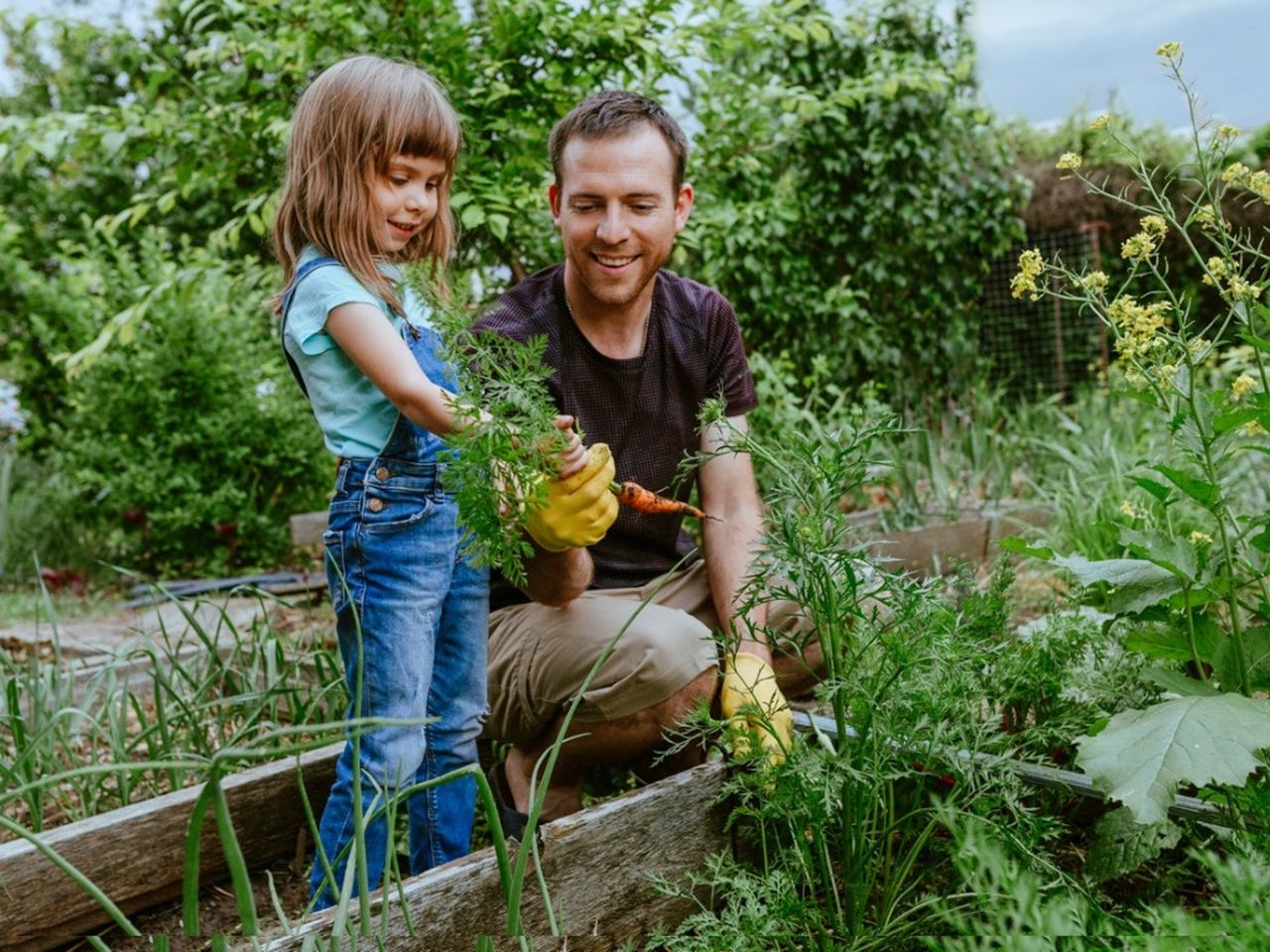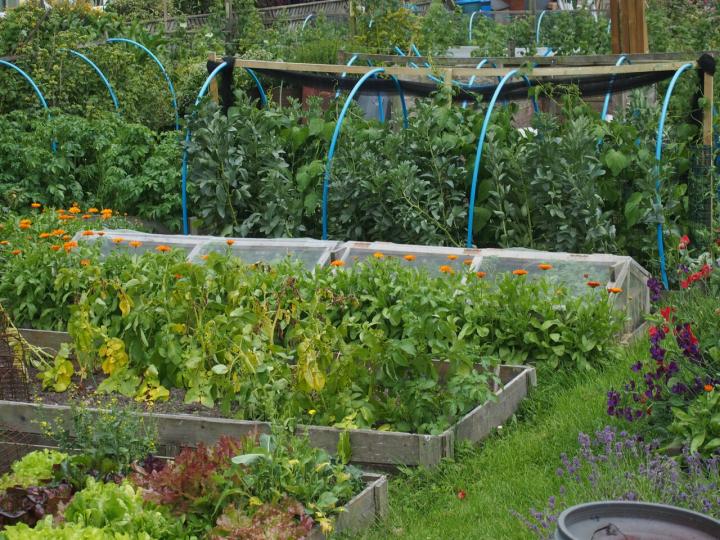How to Plan Your Homestead Gardening Effort
How to Plan Your Homestead Gardening Effort
Blog Article
Discover Important Tips for Successful Gardening Techniques and Practices
Gardening, commonly viewed as an easy activity, includes a variety of methods and techniques that can substantially affect the outcome of your initiatives. By focusing on vital aspects such as soil health, effective sprinkling strategies, and ideal plant selection, garden enthusiasts can develop a growing ecological community that sustains vivid development. Additionally, understanding the subtleties of parasite administration and seasonal upkeep can even more boost productivity. Numerous lovers ignore critical details that can make or damage their gardening success-- exploring these overlooked elements might reveal the trick to cultivating a growing yard.
Comprehending Dirt Health And Wellness
Dirt health is a basic aspect of effective gardening, as it directly influences plant development, nutrient accessibility, and ecological community equilibrium. Healthy dirt is identified by a rich biodiversity of bacteria, raw material, and a well balanced pH degree, which together create an environment for plant advancement.
To recognize soil wellness, one must consider its physical, chemical, and biological residential or commercial properties. The structure and structure of soil impact its capacity to preserve dampness and nutrients, while the chemical composition determines the accessibility of crucial aspects like potassium, nitrogen, and phosphorus. Routine dirt screening is essential to examine these variables, allowing garden enthusiasts to make educated decisions concerning plant foods and amendments.
In addition, advertising organic activity within the dirt is important for keeping its wellness. Practices such as composting, plant turning, and using cover plants can boost microbial diversity, enhance nutrient cycling, and minimize soil erosion. By focusing on soil health and wellness, garden enthusiasts not only optimize plant growth however also contribute to a sustainable ecological community, guaranteeing that their gardening practices are environmentally liable and durable in time.
Effective Watering Methods
Making certain that plants obtain the proper amount of water is vital for their health and development, especially when paired with a solid structure of soil health (Homestead Gardening). Effective sprinkling techniques can substantially affect plant vigor, reducing water wastage and promoting optimal growth
One essential method is deep watering, which encourages roots to expand deeper right into the dirt, boosting drought resistance. This strategy generally entails sprinkling less frequently but in bigger amounts, enabling dampness to penetrate the root area extensively. Timing is likewise vital; morning is the suitable time to water, as it minimizes evaporation and allows foliage to completely dry during the day, decreasing disease risks.
Additionally, employing compost can help keep soil wetness and regulate temperature, additional helping efficient watering techniques. Using a drip irrigation system can also provide targeted dampness straight to the roots, making certain that water gets to where it's most required while saving resources.
Keeping an eye on rainfall and dirt dampness degrees can assist modifications in your watering schedule, ensuring plants obtain constant hydration without over-saturation. By taking on these effective watering methods, garden enthusiasts can promote a successful atmosphere for their plants to prosper.
Plant Selection and Positioning
Just how can the best plant option and strategic positioning change a yard into a prospering ecosystem? When choosing plants, consider factors such as environment, dirt type, and sunshine direct exposure. Homestead Gardening.
Strategic placement involves setting up plants according to their growth habits and requirements. Taller plants ought to be positioned at the back of boundaries to prevent shielding official statement shorter plants. Additionally, grouping plants with similar water and light requirements can boost their development and decrease competition for resources.
Including a diversity of plants not just adds visual appeal however also advertises biodiversity, drawing in beneficial insects and pollinators. Think about the seasonal modifications in your garden; select a mix of evergreens, perennials, and annuals to ensure year-round rate of interest.
Finally, bear in mind to analyze the mature size of plants before growing to stay clear of congestion and make sure appropriate air circulation. Thoughtful plant selection and calculated positioning create a harmonious setting, enabling your yard to thrive while minimizing difficulties.
Parasite and Disease Monitoring
Effective insect and condition management is necessary for maintaining a healthy yard ecosystem - Homestead Gardening. A positive technique, combining cultural, biological, and chemical approaches, can considerably minimize the influence of pests and diseases on your plants

Biological controls, such as introducing advantageous bugs like ladybugs or predative termites, can maintain bug populaces in check without hurting the atmosphere. Furthermore, preserving plant health and wellness with appropriate watering, fertilization, and pruning will reinforce their resilience against diseases.
When treatment is essential, select targeted chemical therapies, making certain to find adhere to application standards to lessen damage to non-target organisms. Always focus on lasting methods, as they promote long-term yard wellness and eco-friendly balance. By integrating these strategies, garden enthusiasts can properly handle insects and diseases, making sure flourishing plants and a productive yard.

Seasonal Upkeep Practices
During each season, implementing targeted maintenance practices is crucial for maximizing yard health and wellness and productivity. In springtime, emphasis on soil preparation by screening pH levels and adding essential changes. This is also the ideal time to apply fertilizers and compost to maintain moisture and subdue weeds. Consistently check emerging plants for diseases and bugs.
As summer techniques, guarantee ample irrigation while keeping track of for indicators of tension or condition. Prune back thick plants to urge air flow and lower humidity around vegetation. This technique not only improves plant health however additionally promotes flowering and fruiting.
With the arrival of fall, it's time to prepare for wintertime. Tidy up fallen leaves and debris to stop pest invasions, and take into consideration planting cover crops to enhance dirt health. This season is likewise excellent for dividing perennials and planting spring-flowering light bulbs.
Verdict
Successful gardening depend upon the combination of audio techniques in dirt health, watering, plant selection, bug monitoring, and seasonal upkeep. By focusing on soil testing and microbial diversity, employing efficient sprinkling methods, and picking appropriate plants, gardeners can create flourishing environments. In addition, aggressive parasite management and diligent seasonal upkeep contribute significantly to overall garden vitality. Embracing these techniques fosters a effective and lasting horticulture setting, making certain prospering development and durability throughout the altering seasons.
By prioritizing important components such as dirt health and wellness, effective sprinkling methods, and suitable plant selection, garden enthusiasts can produce a thriving ecosystem that sustains dynamic development. By focusing on soil wellness, gardeners not just enhance that site plant growth yet likewise add to a lasting ecosystem, making certain that their gardening practices are ecologically responsible and resistant over time.
Taller plants need to be positioned at the back of boundaries to stop shielding shorter plants. Tidy up fallen leaves and particles to prevent bug infestations, and take into consideration planting cover plants to improve soil wellness.Successful gardening hinges on the assimilation of sound techniques in soil health and wellness, watering, plant option, insect monitoring, and seasonal maintenance.
Report this page